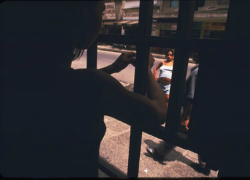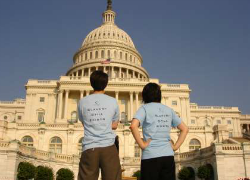This is the final blog of a series of three blog posts addressing technological solutions to combat human trafficking. This post analyzes the efforts private partnerships to encourage the application of technology to create anti-trafficking solutions. The first blog in this series discussed the scope of human trafficking worldwide, and domestic and international instruments designed to address it. The second blog in this series discussed the importance of the increased use of technology in the fight against human trafficking, and provided an overview of the scope of current research on technology.
“[W]e must take action, on the basis of solid information. Having dissected the human trafficking drama by the type of exploitation, the age and gender of the victims, the profiles of perpetrators, and the source/transit/destination of human cargos, we will soon be able to describe the problem, its time trends and space patterns. The goal is to facilitate implementation of the [U.N. Trafficking] Protocol’s ‘3 Ps’: prevention of the crime, prosecution of the traffickers, and protection of the victims. Everyone has a role to play.” – UNODC Executive Director Antonio Maria Costa[i]
Part III: Emerging Partnerships
The first blog in this series discussed the scope of the human trafficking epidemic worldwide—an estimated 27 million men, women, and children are victims of trafficking at any given time.[ii] While international and domestic laws prohibit all forms of enslavement, meaningful efforts to truly eradicate the plague of human trafficking are stymied by a critical problem: a lack of meaningful data on the size, scope, and nature of trafficking. As the second blog revealed, a variety of groups are beginning to compile research and consider the issue of how to incorporate technology into
human trafficking solutions.

Recently, technology companies have been stepping in to fill this void, providing both material and intellectual support for the cause. The United States government has taken notice, and is praising the involvement of private enterprise in the fight against human trafficking.
The U.S. State Department’s 2013 Trafficking in Persons Report includes a brief section discussing the important strides being made to connect anti-human trafficking initiatives with technology.[iii] After discussing innovations in prevention, protection, and prosecution already taking place through the use of mobile devices and computers, the report lists several examples of “technology giants” that have joined the fight against human trafficking. Two of these giants—Google and Palantir Technologies—are working to provide the anti-trafficking movement exactly what it needs most—comprehensive data.
Google – Connecting Anti-Trafficking Hotlines
Google funded a new global data sharing collaboration by granting a $3 million Global Impact Award to anti-trafficking organizations Polaris Project, Liberty Asia, and La Strada International. Google’s Global Impact Awards are given to “support nonprofits using technology and innovation to tackle tough human challenges.” All three recipients of this particular Global Impact Award are involved in addressing human trafficking on separate continents:
- The Polaris Project, named for the North Star “Polaris” that guided slaves to freedom before the United States abolished slavery, is a leading anti-slavery organization based in Washington, D.C. It focuses on advocating for stronger federal and state anti-trafficking laws, operating the National Human Trafficking Resource Center hotline, conducting trainings, and providing vital services to victims of trafficking. The Polaris Project strives to “create long-term solutions that move our society closer to a world without slavery.”
- Liberty Asia is a relatively new non-governmental organization formed in 2011 to unite the hundreds of groups working independently on the issue of human trafficking in Asia. Liberty Asia aims to unite these groups by making online resources available to enable information sharing and coordination. Its mission includes: “coordinat[ing] activities, particularly across-borders; shar[ing] information, expertise, evidence, case studies and operations; provid[ing] a regional contact point for those threatened and victimised; creat[ing] and shar[ing] education programmes and awareness campaigns to broaden knowledge of slavery in Asia; and creat[ing] a powerful network across Asia to introduce and collaborate on strategies and future actions.”
- La Strada International (“LSI”) is a network of eight European non-governmental organizations in Belarus, Bulgaria, Czech Republic, Macedonia, Moldova, The Netherlands, Poland and Ukraine. LSI aims to prevent trafficking, especially of women, throughout Europe. The mission of LSI is “to improve the position of women and to promote their universal rights, including the right to choose to emigrate and work abroad and to be protected from violence and abuse.”
What do these three non-governmental organizations have in common, besides their aim of abolition? Each organization independently operates its own human trafficking hotline, receiving hundreds of calls from victims and from individuals who want to report suspected trafficking. Connecting these helplines is one of the first steps toward identifying illicit patterns and providing victims with more effective support worldwide. Through this Google-funded initiative, the organizations will begin to compile and analyze data from each of their call centers, no longer taking in information in isolation. It is the first step in tracking global trafficking trends.
Since its inception in 2004, Polaris’ hotline alone has received 72,000 trafficking-related calls, reported more than 3,000 trafficking cases to law enforcement officials and assisted nearly 8,300 trafficking victims. This three-minute video highlights how the project will use analysis of data from these incoming calls to combat trafficking.
Notably, the video describes how, as more and more data are collected and shared, researchers will be able to locate “hot spots,” or risk areas, and track patterns of trafficking. Armed with this information, anti-trafficking advocates can begin to construct comprehensive global solutions that are responsive to the realities of trafficking, rather than mere guesswork.
As the second blog in this series noted, there is currently a lack of clarity surrounding what the characteristics of a useful international instrument to combat technology-facilitated trafficking should look like, and a debate regarding whether the current Protocol, the United Nations Protocol to Prevent, Suppress and Punish Trafficking in Persons, Especially Women and Children, provides adequate legal scaffolding to encompass the burgeoning use of technology to facilitate trafficking. The data that will become available as a result of the collaboration between Polaris Project, Liberty Asia, and La Strada International will shed more light on where and how technology is used to facilitate trafficking. At that point, both international and domestic lawmakers will be better equipped to assess the current laws and propose changes if they are necessary.
Palantir Technologies – Making Sense of Raw Data
Palantir Technologies is the second technology giant involved in helping this project succeed. The company describes its overall business’ purpose as “working to radically change how groups analyze information.” Its primary business is offering software applications “for integrating, visualizing and analyzing the world’s information,” software that is used by a variety of industries including intelligence, defense, and law enforcement.
Using this expertise, Palantir partnered with Polaris to provide an analytical platform, engineering, training, and support resources to Polaris’ National Human Trafficking Resource Center. Palantir’s platform and assistance are enabling the study and application of the data derived from calls to the hotline.

As mentioned above, the United States government encourages the development of such partnerships to make use of the tools private companies already have at their disposal. Not only is this phenomenon filling a void in a problem too large and nebulous for the criminal justice system to tackle alone, but it also attacks the problem from an angle that is inherently not available to government entities because of their intimidating status as law enforcement.
Bradley Myles, executive director of the Polaris Project, highlights the unique ability of private groups such as nonprofits and businesses to serve as a resource for trafficking victims. “We’re not the government and we’re not law enforcement, so people generally give us very direct information about what they’re experiencing,” Mr. Myles said in this interview with the Huffington Post. In the interview, he also mentions the need for these private groups to serve as a “fulcrum,” connecting law enforcement with perpetrators while at the same time connecting victims with the resources they need to recover.
Currently, the legal community is equipped with what appears to be a relatively robust set of international and domestic laws tailored to criminalizing human trafficking. The anti-trafficking movement’s present focus on incorporating business and technology into evidence-based solutions has the potential to provide the long-missing piece to the human trafficking puzzle—not necessarily more laws, but better information leading to increased enforcement of the existing laws. As more complete information is compiled and analyzed with the help of technology and innovation, more lives can be saved from the suffering of human trafficking.
P.S. – The U.S. Department of State published the following list of 20 Ways You Can Help Fight Human Trafficking, and Polaris Project compiled this list of international resources. You don’t need to be Google to make an impact.
Whitney Denning is a 3L and a staff editor for the Denver Journal of International Law & Policy.
[i] Antonio Maria Costa, Exec. Dir. United Nations Office on Drugs and Crime, Human Trafficking: A Crime that Shames Us All (Feb. 13, 2008), available at http://www.unodc.org/unodc/en/about-unodc/speeches/2008-02-13.html (emphasis omitted).
[ii] U.S. Dep’t of State, Trafficking in Persons Report 7 (2013).
[iii] Id. at 14-15.

